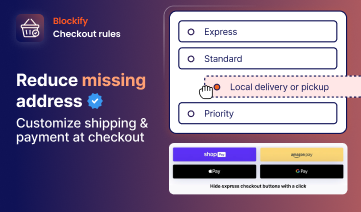Handling returns is a reality of running an online store. With returns making up nearly 17% of all retail sales in 2024, having a good ecommerce returns management plan isn’t just helpful—it’s critical. Without one, returns can pile up and hurt your profits.
What Are Ecommerce Returns?
E-commerce returns refer to the process of customers returning products purchased through an online channel. This process includes initiating a return request, shipping the item back, inspecting its condition, repackaging it, and determining whether it can be restocked or requires disposal. Effective e-commerce returns management ensures a seamless experience for customers while optimizing logistics and minimizing revenue loss for businesses.
Here’s how a typical online return works:
- The customer submits a return request.
- They receive a shipping label and pack the item.
- The package is sent back to the retailer.
But the real work begins once the item arrives. Returned products must be inspected, possibly transferred between warehouses, and added back to inventory. This process, known as reverse logistics, is far more intricate than in-store returns and requires a well-structured system to prevent delays and unnecessary costs.
Why Do Ecommerce Returns Management Matter?
A high return rate can drain your profits fast. More returns mean higher shipping costs, more time spent restocking, and potential resale issues if items are damaged. But more importantly, a spike in returns could signal a problem. Here’s what might be going wrong:
- Your product descriptions aren’t clear. If customers feel misled, they’ll send stuff back.
- There are quality issues. Maybe your supplier is cutting corners, or a batch of products has defects.
- Sizing is inconsistent. This is a huge issue in clothing and footwear.
- Your marketing is attracting the wrong buyers. If people expect something different from what they get, they’ll return it.
On the flip side, a low return rate usually means your customers are happy, your products match expectations, and your store is attracting the right people.
How is Ecommerce Return Rate Calculated?
Returns are an unavoidable part of online shopping. No matter how great your products are, some customers will send things back. Maybe the item didn’t fit, didn’t match expectations, or—let’s be honest—they just changed their mind. But how do you measure how often this happens?
The Simple Formula for Return Rates
Figuring out your return rate isn’t rocket science. Here’s the basic formula:
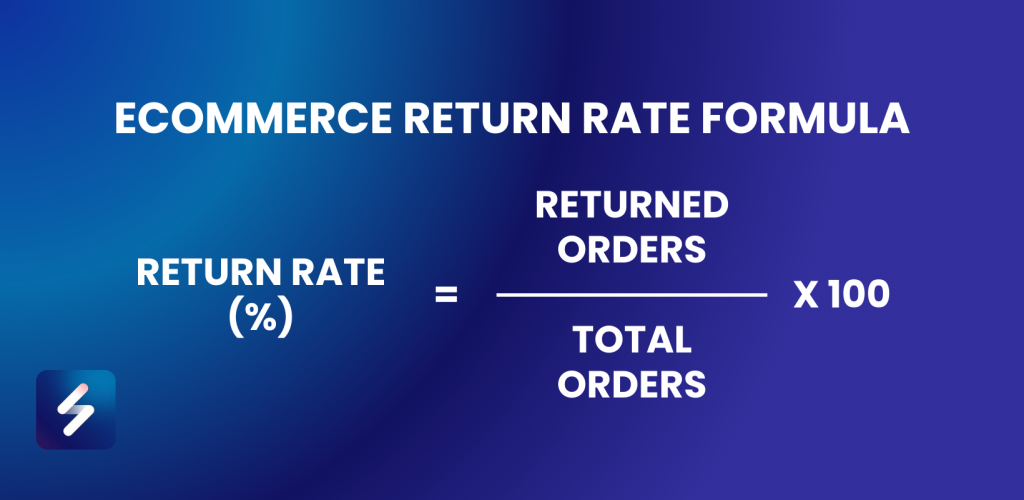
Example:
Let’s say you received 5,000 orders last month, but 500 of them got returned.
Formula = (500*5000) / 100 = 10%
That means 10% of all orders were sent back. Not ideal, but also not the end of the world.
What If Customers Only Return Part of an Order?
Sometimes, shoppers don’t return everything—just a few items from a bigger order. In that case, it makes more sense to calculate the item return rate instead:
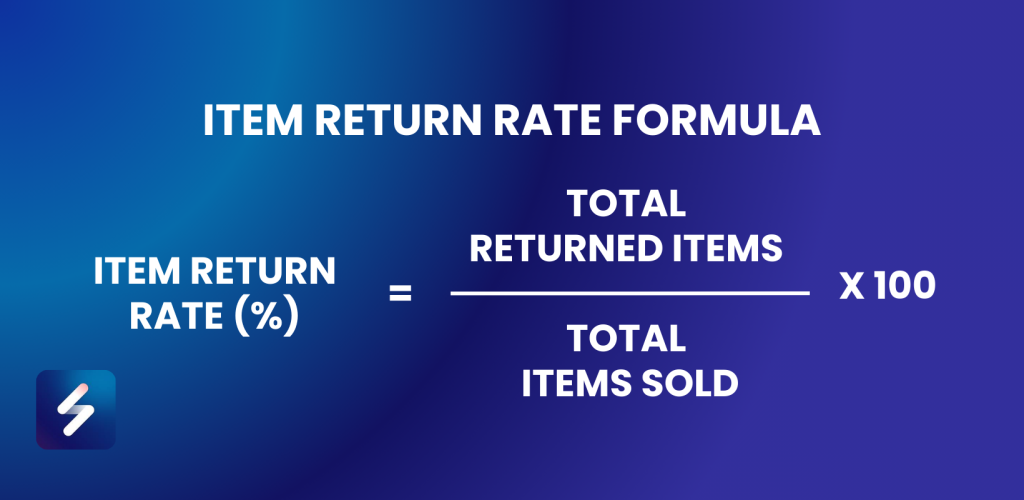
This is especially useful for fashion retailers where customers order multiple sizes and return what doesn’t fit.
What’s a “Normal” Return Rate?
According to CapitalOne Shopping, the average e-commerce return rate in 2024 hit 26.4%, marking a 7.22% increase from 2022. Meanwhile, in-store returns dropped by nearly 20%. Return rates, however, vary widely across different product categories. Apparel and footwear tend to see higher return rates, mostly due to sizing and fit issues. On the other hand, electronics and beauty products typically have lower return rates, as customers are less likely to return them once opened.
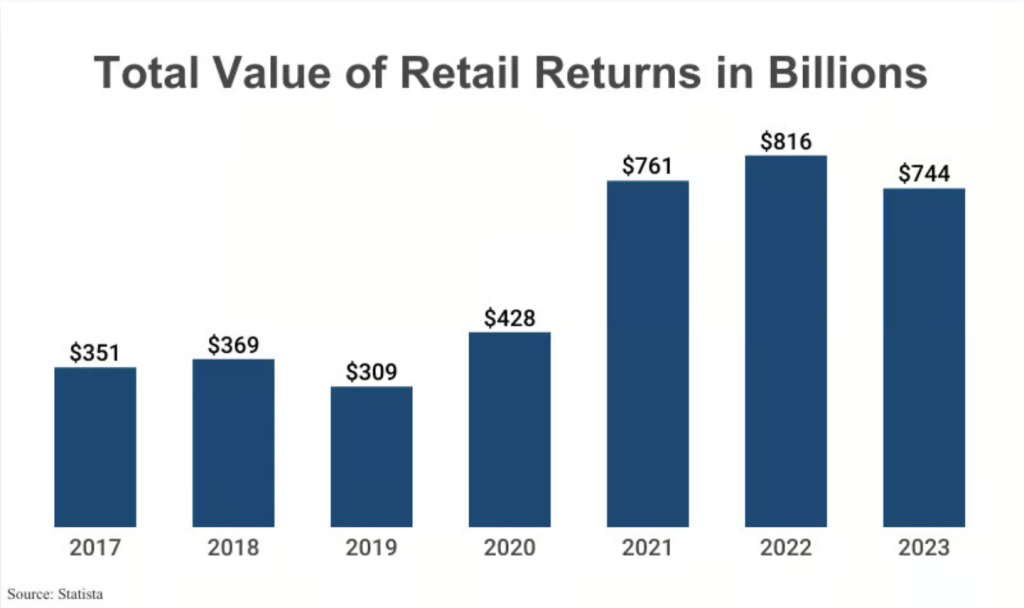
So, there’s no one-size-fits-all answer. Return rates depend on what you’re selling.
- Clothing & shoes → Higher return rates (because sizing is tricky).
- Electronics → Returns often happen due to buyer’s remorse or product defects.
- Holidays & seasonal trends → Returns spike after gift-giving seasons.
Another growing trend? Intentional returns. More shoppers now order multiple sizes or variations of a product, planning to keep one and send the rest back. This practice, while convenient for buyers, can create major challenges for retailers managing inventory and costs.
If your return rate seems unusually high, it’s worth digging into why—before it starts eating into your profits.
Most Common Reasons Customers Return Products
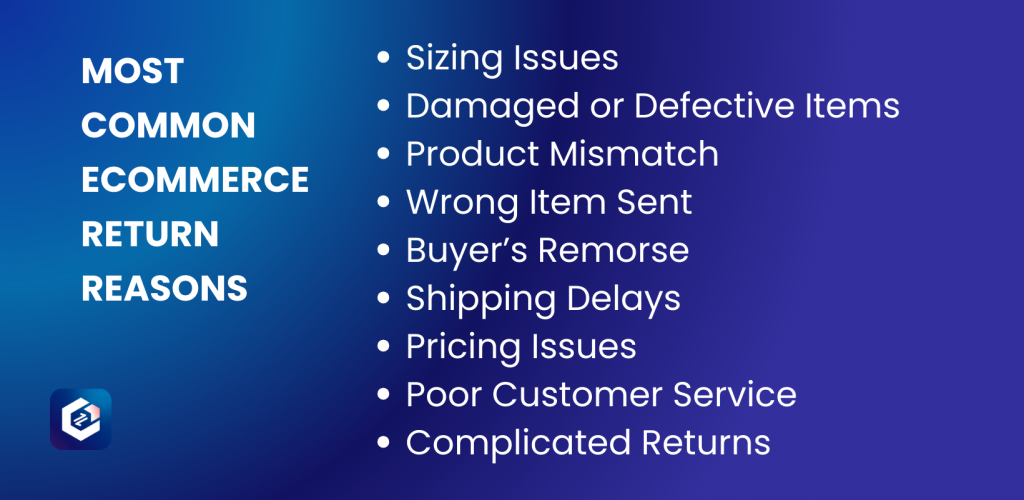
Returns are frustrating for both businesses and customers. Some are unavoidable, but many could be prevented with the right strategies. The first step? Understanding why customers send products back in the first place.
The Item Doesn’t Fit
Sizing issues are one of the biggest reasons for returns, especially in clothing and footwear.
- If a product doesn’t fit, there’s no easy fix—customers can’t resize a pair of jeans or stretch out a pair of sneakers.
- Inconsistent sizing across brands makes it even worse. A “medium” in one brand might be a “large” in another.
- Online shoppers don’t get to try things on before buying, so returns are inevitable when fit isn’t right.
The Product Arrived Damaged or Defective

No one likes opening a package only to find a broken or malfunctioning item inside. This is a common issue with electronics, appliances, and fragile products.
- Sometimes, the problem starts at the factory—a manufacturing defect.
- Other times, it’s poor packaging or rough handling during shipping that causes damage.
- Regardless of the reason, customers expect their orders to arrive in perfect condition—anything less, and they’re sending it back.
The Product Doesn’t Match the Description
This is one of the biggest trust-breakers in eCommerce.
- If the actual product looks different from the photos, disappointment is inevitable.
- Misleading descriptions lead to the dreaded “Expectation vs. Reality” issue.
- Vague or missing details—like material, size, or features—leave customers guessing, which increases return rates.
The Wrong Product or Variation Was Sent
Getting the wrong item is frustrating, especially when customers order something specific.
- A customer buys a black jacket but receives a navy blue one.
- A limited edition perfume is ordered, but the standard version arrives instead.
- A phone case for an iPhone 13 is delivered, but it’s actually for an iPhone 12.
Small mistakes like these can cost a business repeat customers.
The Customer Changed Their Mind
Sometimes, it’s not about the product at all—the customer just doesn’t want it anymore.
- Impulse purchases are a huge factor, especially in fashion and accessories.
- The item might not match their personal style, or they decide it’s not what they expected.
- Many retailers accept these returns as part of their customer service strategy to keep shoppers happy.
Poor Shipping and Delivery Issues
Fast shipping is expected these days—when it doesn’t happen, frustration kicks in.
- If a product arrives too late, the customer may no longer need it.
- Delays often lead to refund requests or order cancellations.
- Even if the shipping delay isn’t your fault, customers still associate the experience with your brand.
Pricing Issues and Value Perception
Customers want to feel like they got a good deal—if they don’t, they might return the item.
- If they find a cheaper price elsewhere, they may send the product back and buy from a competitor.
- Some brands offer discounts so steep that customers who paid full price feel like they overpaid.
- If the product doesn’t match its price tag in quality, customers might not think it was worth it.
Poor Customer Service and Support
Customer service doesn’t just matter before the purchase—it’s just as important after.
- If customers can’t get help, they might return the product instead of troubleshooting.
- Slow responses to emails or live chats lead to frustration.
- If an order is missing an item, and support is unresponsive, the customer may return everything out of frustration.
Complicated or Outdated Return Processes
If returning an item feels like a hassle, customers may not shop with that brand again.
- A confusing return policy leaves people unsure if they can return an item at all.
- If the return process takes too long, customers get impatient and frustrated.
- Some outdated eCommerce systems don’t provide clear return instructions, leading to unnecessary returns.
How to Reduce Returns in E-commerce
Let’s be honest—returns are a headache. They cut into profits, slow down operations, and frustrate both you and your customers. But here’s the thing: most returns are preventable. With the right strategies, you can cut down on unnecessary returns while keeping customers happy.
Automate the Returns Process
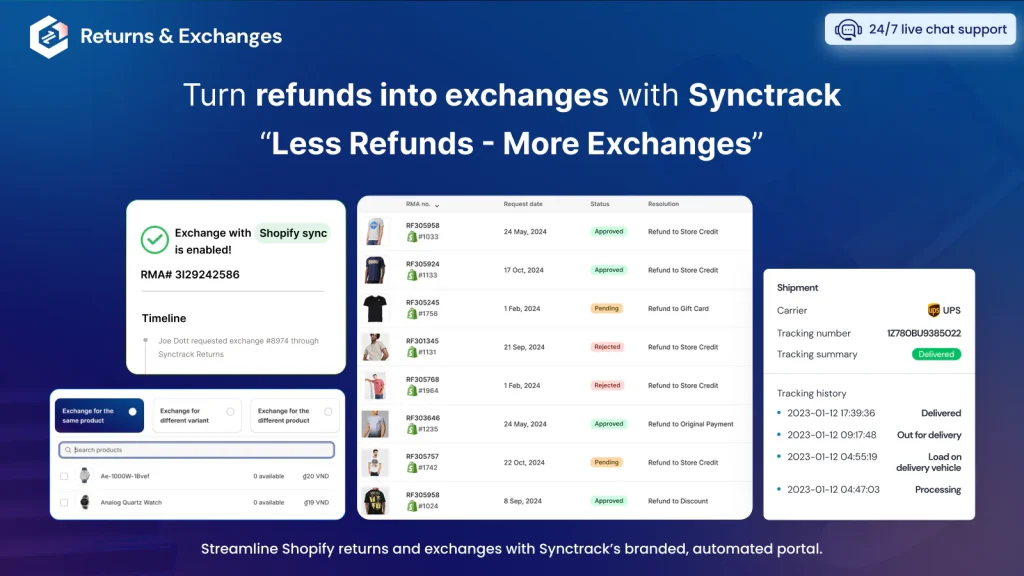
Handling returns manually? That’s a time-waster. Automation makes life easier for both you and your customers. With tools like Synctrack: Returns & Exchanges, managing returns becomes effortless. From auto-approving requests to issuing instant refunds or store credit, Synctrack streamlines the entire process. It features a branded return portal, real-time tracking, and seamless Shopify integration, ensuring a hassle-free experience for both you and your customers. By automating returns with Synctrack, you can cut costs, improve efficiency, and retain more revenue by encouraging exchanges instead of refunds.
✔ Instantly generate return labels
✔ Update inventory the second a return is processed
✔ Send customers real-time return updates so they don’t flood your inbox with “Where’s my refund?” emails
✔ Track return reasons to spot trends and fix recurring issues
A well-automated system makes returns faster, smoother, and way less expensive.
Use Return Data to Stop the Cycle
You can’t fix what you don’t measure. Dig into your return data and ask:
✔ Which products are returned the most?
✔ Why are customers sending them back? (Size issues? Quality complaints? Wrong expectations?)
✔ Do certain customer segments return more than others?
Spot the patterns, then make changes—whether that’s improving product quality, adjusting descriptions, or rethinking your target audience.
Make Your Return Policy Foolproof
Confusion leads to frustration—which leads to more returns. Research from Invesp shows that 67% of shoppers check return policies before buying, so make yours crystal clear:
✔ Use simple, direct language (no legal jargon)
✔ Display the policy on product pages and checkout
✔ Highlight key points: return timeframes, conditions, and any exclusions
The goal? Fewer misunderstandings, fewer unnecessary returns.
Step Up Quality Control
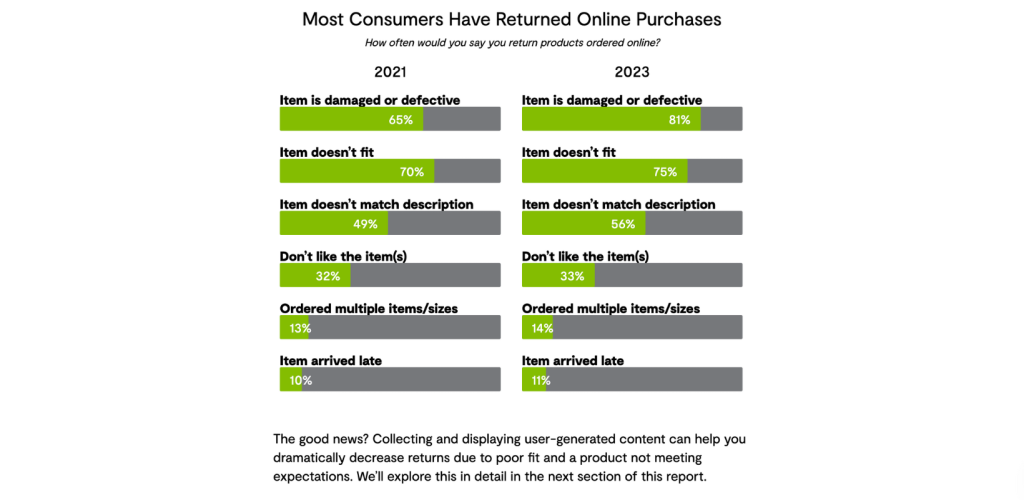
Let’s face it—nobody wants to deal with a broken product. In 2023, 81% of returns were due to defects or damage. Here’s how to prevent that:
✔ Inspect items before shipping (especially fragile ones like electronics)
✔ Use high-quality packaging so products don’t arrive in pieces
✔ Work with reliable carriers—because if your logistics partner doesn’t care, your customers will
A single bad experience can lose you a customer for life. Don’t let that happen over something preventable.
Fix Reverse Logistics Before It Costs You More
Returns don’t magically disappear once they’re back in your warehouse. They need a structured process to avoid bottlenecks:
✔ Inspect & sort returns fast—the longer they sit, the more money you lose
✔ Restock items that can be resold immediately
✔ Properly dispose of damaged goods so they don’t clutter inventory
A messy return process = unnecessary costs. Stay ahead of it.
Make Returns More Sustainable
Returns are wasteful, but there are ways to cut down on unnecessary waste:
✔ Encourage customers to reuse original packaging
✔ Switch to eco-friendly shipping materials (recycled paper, biodegradable plastics, etc.)
✔ Offer store credit instead of refunds to reduce return shipping
Sustainable return practices = lower costs and better brand reputation.
Stop Misleading Customers with Bad Photos & Descriptions
A lot of returns happen because the product doesn’t match expectations. Fix this by:
✔ Using high-quality, unedited images—no weird filters or unrealistic edits
✔ Listing clear size, material, and feature details
✔ Including care instructions to prevent misuse
If customers know exactly what they’re buying, they’re way less likely to return it.
Rethink Refunds—Offer Alternatives Instead
Sometimes, a full refund isn’t necessary. Instead, consider:
✔ Store credit to keep the money in your business
✔ Free size exchanges to fix fit issues without losing the sale
✔ Loyalty points or discounts to encourage repeat purchases
The result? Happier customers and lower return costs.
Use Customer Reviews to Your Advantage
Reviews help set expectations and prevent unhappy surprises. Encourage more reviews by:
✔ Offering discounts or points for detailed feedback
✔ Rewarding photo & video reviews so shoppers can see real-life results
✔ Using review insights to fix product issues before they lead to more returns
The more real customer feedback you have, the less likely new customers will feel the need to return something.
Adjust Your Targeting to Reduce Mismatched Purchases
If returns are still high, it might not be the products—it might be your marketing.
✔ Check if you’re attracting the right audience
✔ Make sure product pages align with customer expectations
✔ Experiment with different messaging, pricing, or product positioning
If the wrong people keep buying and returning, it’s time to adjust your strategy.
Wrap Up
Technology is changing ecommerce returns management, making it easier for businesses to track, process, and analyze returns. Automated systems, AI-driven insights, and better logistics help reduce errors and improve efficiency. Start with Synctrack Returns & Exchanges and more! By leveraging tools, businesses can reduce return rates and optimize their operations. The future of returns isn’t just about handling them better—it’s about using data to prevent them in the first place.
>>> Learn More: Returns Management: Best Practices To Cut Costs in 2025









